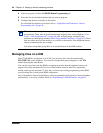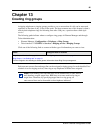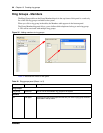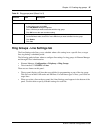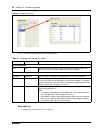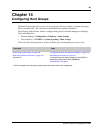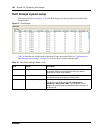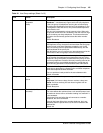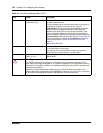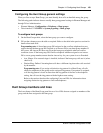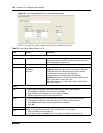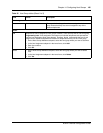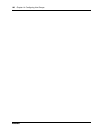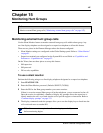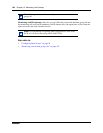
102 Chapter 14 Configuring Hunt Groups
N0060600N0060600
Overflow <any system DN> (including
a Hunt Group DN)
This setting determines where unanswered calls are routed after
the Queue timeout occurs.
If a call overflows back to the same Hunt Group, the call goes to
the bottom of the queue, and is treated as a new call.
Answer DNs: A linear hunt group that has defined an overflow
telephone does not support having the overflow telephone
assigned as an Answer DN to any hunt group member. If this
occurs, the Answer DN does ring at the hunt group telephone
when an overflow condition occurs. Answer DNs are set up under
the Line Access heading for each DN. Refer to “Answer DNs” on
page 196. Answer key must be set to Extended for overflow to
work correctly. Refer to “Answer DN answer key levels” on
page 76.
Default: Hunt Group DN
Aux. Ringer <check box> If selected, defines whether an auxiliary ringer (if installed) rings
for incoming calls to a hunt group.
If cleared, the control of the auxiliary ringer falls back to the
control defined on a per telephone or per line basis.
Distinct ring None
Pattern 2, 3 or 4
Select a ring pattern for the hunt group.
Default: None
Warning:
If you assign a distinctive ring pattern for a Hunt Group, all calls offered to telephones in the
group will use the assigned ring pattern. If no pattern is assigned, or if the ring pattern is lower in
status than the ring pattern of the line or the telephone setting, the call uses the ring pattern with
the highest status setting.
Refer to the sections that describe configuring Lines (“Trunk/Line Data, main panel” in the
BCM 4.0 Networking Configuration Guide (N0060606)) and DNs (“Line Access tab” on page 44)
for information about assigning distinctive ring patterns to lines and telephones.
Table 34 Hunt Group settings (Sheet 3 of 3)
Field Values Description



